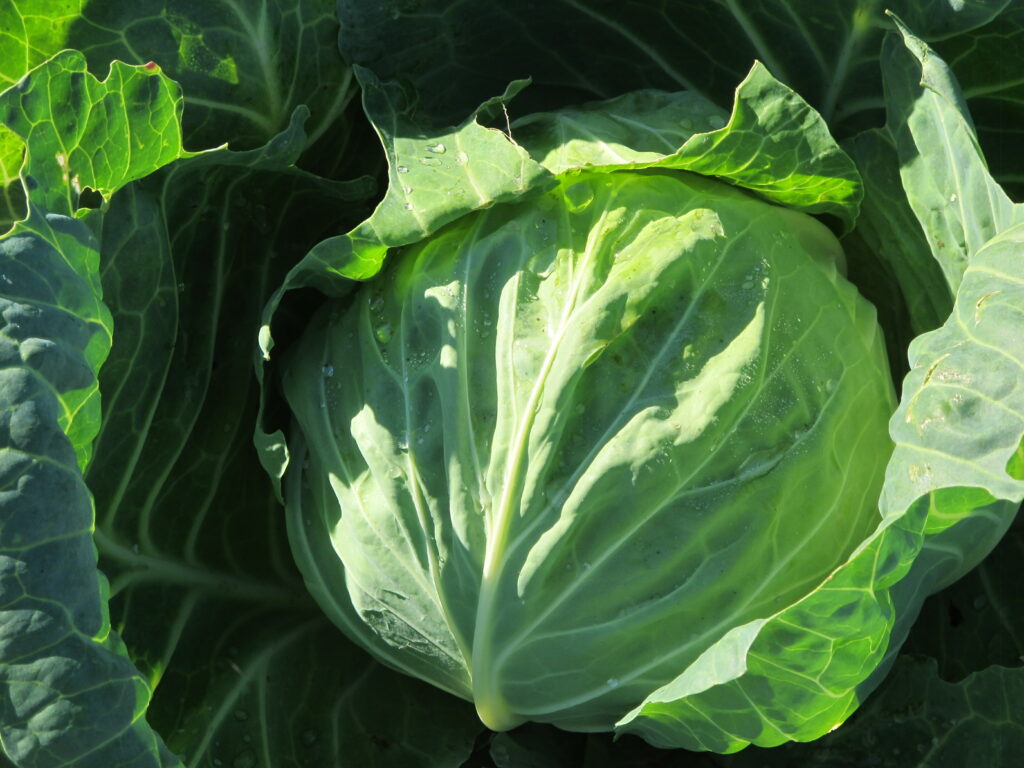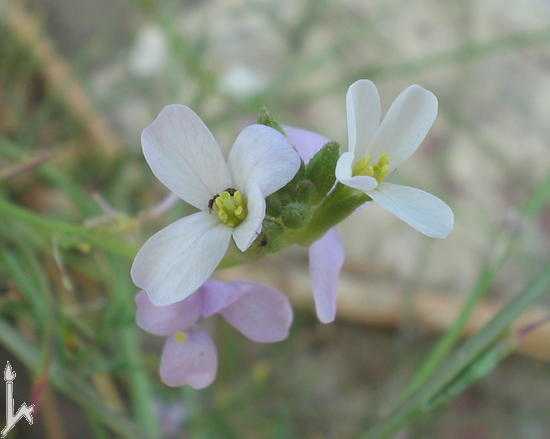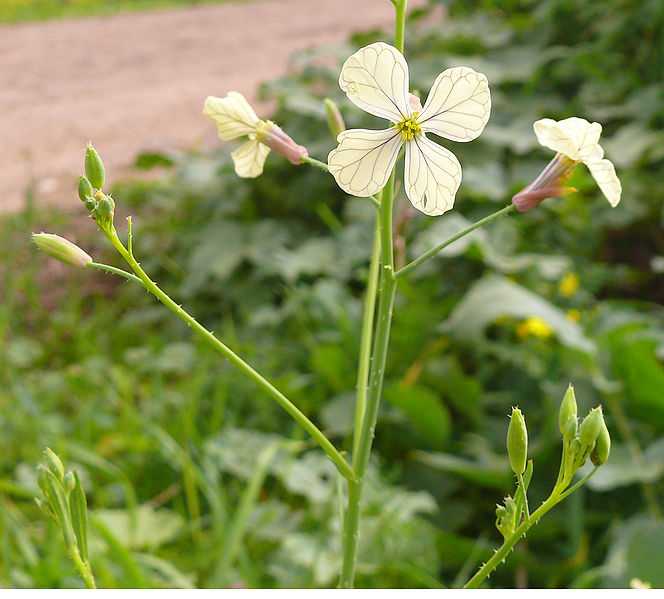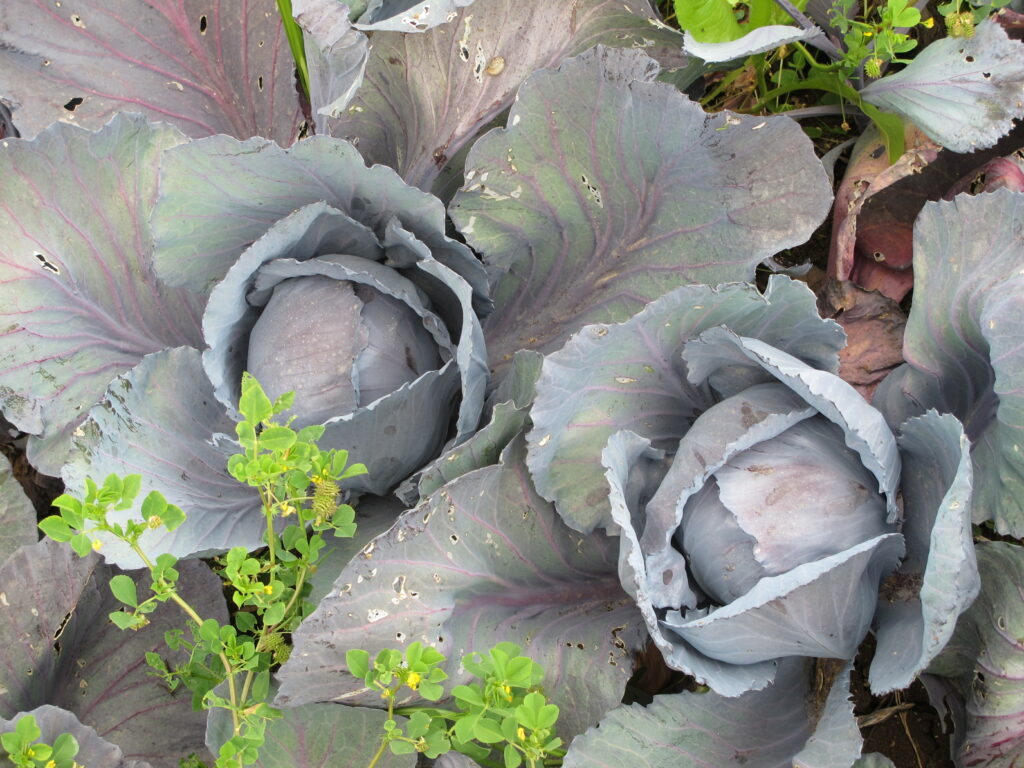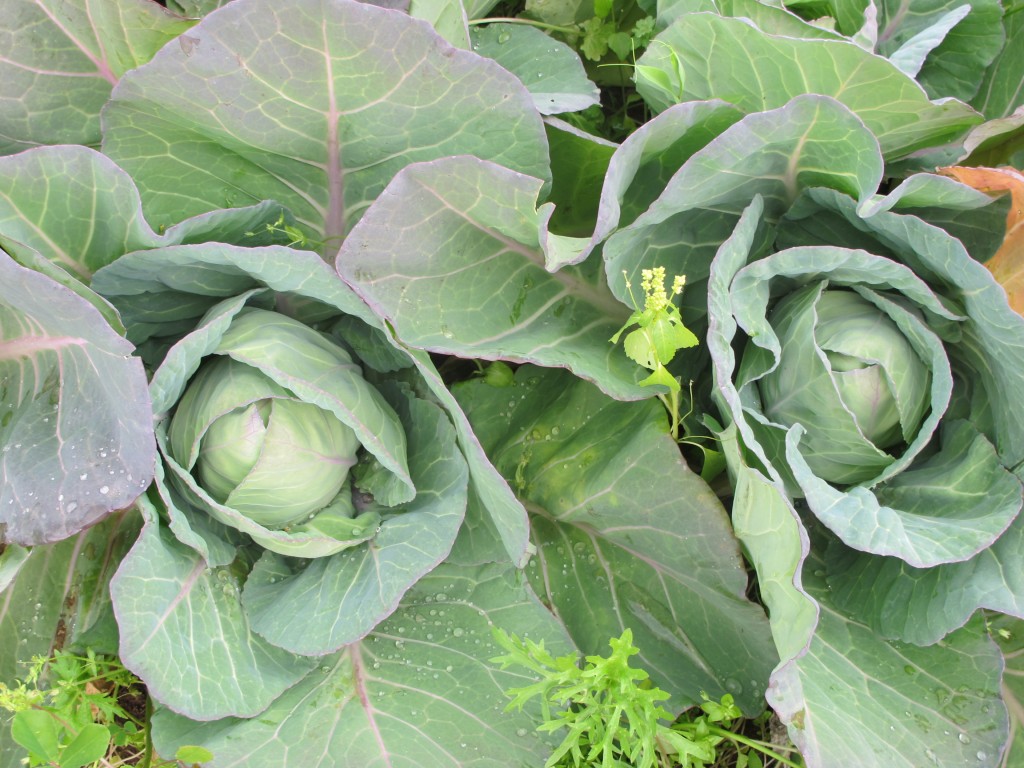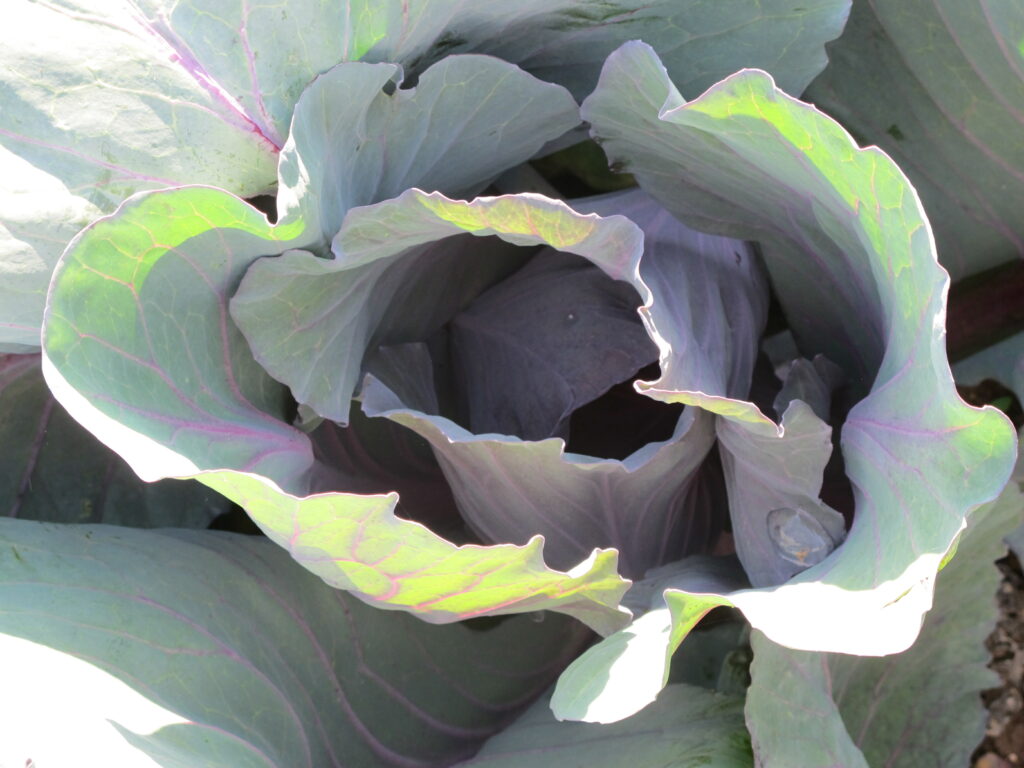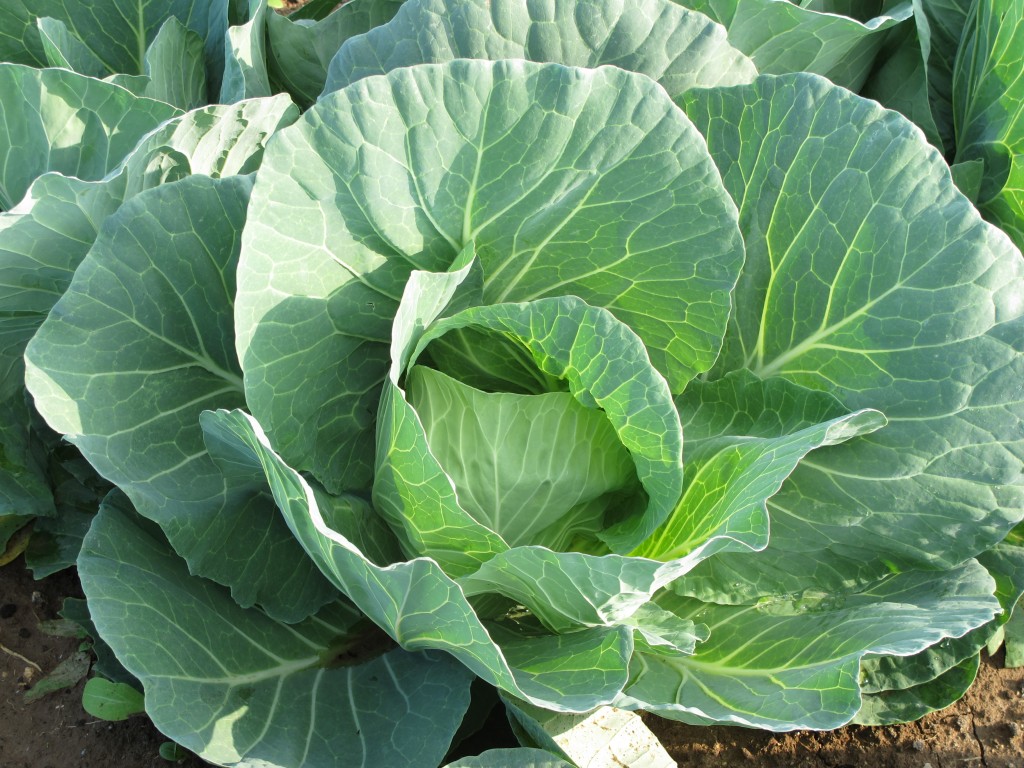Love is Like a Cabbage
My love is like a cabbage
Divided into two,
The leaves I give to others,
The heart I give to you.
(Author Unknown)
The remarkable photos were taken by Chana – Our thanks!
There are days during these trying times when I just want to fold up – as a leaf inside a leaf inside a leaf inside a leaflet – to burrow within, away from the harsh reality that surrounds, to be protected and wrapped and coddled.
The winter, which disappeared in an instant (remember that a week ago it was raining?) marks a zenith for the members of the remarkable Brassicaceae family growing in Chubeza, namely the broccoli, cauliflower, cabbage, kale and kohlrabi. And now winter is slowing to an end, April has arrived, spring has sprung, and we still haven’t told you about the most esteemed member of them all: the glorious cabbage. You’ve been enjoying his visits for so long that some of you have begun treating him like a guest who forgot to leave… So, to express the love and appreciation the humble cabbage deserves, this newsletter is his.
The original wild cabbage hailed from the Mediterranean coastal region, Southern Europe and Southern England, where it thrived in the humidity. This primeval cabbage was probably quite different from the cabbage we know today, perhaps a stem with a few open leaves. As mentioned, cabbage belongs to the prominent, extensive Brassicaceae family which includes cauliflower, broccoli, Brussels sprouts, kohlrabi, kale, collards, plus and the Oriental leafy vegetables bok choy, mustard, Chinese cabbage, tatsoi, and many others.
Brassicaceaes belong to the Cruciferae family, named for the shape of their flowers whose four petals resemble a cross:
Research indicates that Brassicaceae vegetables can fight breast, abdominal and colon cancer, thanks to phytochemicals called “indoles” found within these vegetables. Cabbage juice is known as a folk remedy for ulcers. Many a grandmother used cabbage leaves to bandage and soothe swollen and inflamed areas of the body, as well as postpartum breast engorgement. Cabbage is rich in iron, calcium and potassium, and contains high levels of vitamins B, C and D. Red cabbage also boasts high levels of iron, calcium and potassium, as well as vitamin C and dietary fibers. This nutritional abundance makes it a very efficient bone strengthener, immune system fighter, respiratory disease defender, and skin irritation soother. On the other hand, excessive consumption of cabbage may adversely affect those suffering from hypothyroidism.
Read more about the nutritional benefits of amazing cabbage here.
Pickling cabbage is a great way to keep it un-refrigerated for long periods of time, as well as perfectly preserving its vitamins. Captain Cook attributed his seamen’s hearty health to their daily ration of sauerkraut.
In Northern Europe, cabbage was one of the only crops able to survive the frozen winter, which is why the snowy-day menu there consisted mainly of cabbage dishes. This was the fare of every Russian peasant as well, which featured sauerkraut soup, rye bread and a nasty drink. Sauerkraut was brought to Poland and Hungary by Turkish nomads in the 16th and 17th centuries, and a common 18thcentury German meal usually included cabbage, sausages, lentils and rye bread. In the Scandinavian regions, the winter menu was comprised of foods which could be preserved by smoking, drying or salting—all perfect for cabbage. In China, they would dry cabbage leaves and store them for winter, then moisten them with water to revive them as an addition to soup or stew. The Chinese, too, served sauerkraut as a mealtime side dish.
Throughout history, the cabbage has known many ups and downs. The Greeks loved it for its medicinal properties, but medieval aristocracy turned up its nose at the mere mention of the vegetable: In Medieval Europe, vegetables, particularly leafy vegetables, were considered harmful to your health, as they produce “wind” (gas), which was unthinkable in aristocratic circles. But still, “the masses” continued to eat cabbage (to their great benefit!).
If you were to heed the advice of a 2nd century BC Roman scholar, you’d prepare for a booze-laden party by first consuming lots of fresh cabbage seasoned in vinegar. Egyptian drinkers were advised to begin their meal with fresh cabbage, including its seeds, to remain sober till the end of the meal. (Seems like the common cure for hangovers was the consumption of more and more cabbage…)
The East Europeans and Turks stuff it, the Chinese add it to stir-fries, the Ethiopians cook it spicy, and the Japanese serve it pickled as an appetizer. In Germany, cabbage is the national dish, in a sweet-and-sour slow-cooked delicacy of red and white cabbage, and in Scandinavia, the ultimate appetizer is coleslaw salad (whose name derives from the Dutch “kool” for cabbage and “sla” for salad).
In 1984, the cabbage was finally granted its due when the UN Food and Agricultural Organization declared it one of the 20 most important foods in world nutrition.
Check out our variety of cabbage recipes in our recipe section on our website.
Cabbages are a phenomenal creation of nature. From the start, the cabbage plant grows “normal” open leaves for a good while. When it reaches the precise, certain moment – as if heeding an internal biological clock – the cabbage leaves suddenly begin to grow folding inward, forming a loose ball. In time, more and more inner layers of leaf-upon-leaf grow, compressing the round head from the inside, forming a perfectly tight sphere. Truly incredible! I never fail to be fascinated as the flat leaves once again perform their acrobatic feat to curl up into ball…
May this week also bring the right and proper time for the event we all long for – the return home of the hostages.
Alon, Bat-Ami, Dror, Orin and the entire Chubeza team
_________________________________________
WHAT’S IN THIS WEEK’S BOXES?
Monday: Carrots, lettuce, red beets/fennel, fava beans/peas/zucchini, potatoes, cabbage/cauliflower, parsley/coriander/dill, leeks/scallions, tomatoes, cucumbers. Small boxes only: celeriac/celery stalk.
Large box, in addition: Kohlrabi, Swiss chard/kale, sweet potatoes/onions, red bell peppers.
FRUIT BOXES: Bananas, red or green apples, avocados, oranges/clementinas, pomelit/grapefruit.
Wednesday: A bag of carrots/bunched mini caroots, lettuce, kohlrabi/fennel, fava beans/peas/zucchini, potatoes, red bell peppers/cauliflower, parsley/coriander/dill, leeks/scallions, tomatoes, cucumbers, Swiss chard/kale/red beet greens.
Large box, in addition: Celeriac/celery stalk/red beets, sweet potatoes/onions, cabbage.
FRUIT BOXES: Bananas, red or green apples, avocados, oranges/clementinas, pomelit/grapefruit.

